Southern Lord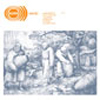
Masters of the stomach-churning, intestine-voiding, subharmonicfrequencies, Steven O'Malley and Greg Anderson return for a sequel tolast year's impressive
White 1, not surprisingly entitled
White 2.Much has been made of Anderson and O'Malley's transmogrification andmutation of their Nordic black metal influences into the slow-motion,doom-laden minimalism of their recordings as Sunn O))). Never mind thatit isn't a very original idea, having previously been put forth bySeattle ambient sludge-core band Earth. Listen to the track "Ripped onFascist Ideas" from Earth's live album
Sunn Amps and Smashed Guitarsfor the origin of Sunn O)))'s sonic palette. To their credit, however,Sunn O))) have relentlessly pursued this aesthetic, going several stepsfurther with their use of variable-speed tape mutations and othersynthetic technology to create the lowest low-end feasible, with thepossible exception of that lowrider that cruises through myneighborhood in the middle of the night blasting bone-rattling Miamibass. On
White 2, they choose not to repeat the guest-vocalist tactics of the first
Whitealbum, in favor of creating three lengthy, horror movie soundscapesthat willfully test the limits of the stereo playback system, even asthey revel in fascinatingly tangible textures. Although they approachtheir compositions from a completely different perspective, Sunn O)))arrive in the same general "dark ambient" territory as Lustmord orLull, spinning vaguely cinematic post-industrial abstractions in whichmood is the primary attraction. The fourteen doom-laden minutes of"Hell-O)))-Ween" are the most prototypical of the band: a series ofbrutally plodding riffs that are allowed to reverberate, slowlybuilding up compounding layers distortion and bass rumble like slowlycoagulating amber dripping down a prehistoric tree. It's crushing anddowtrodden, but it's nothing compared to the next two epic tracks ofdesolation and fear. "bassAliens" explores the lonely, claustrophobiccorners just out of sight on Ridley Scott's
Nostromo, hauntedby the faint specter of menace, distorted subharmonic rumbles thatsputter and mutate, spewing foul plumes of hydrochloric acid. What'sremarkable about this track is the effective usage of higher-frequencytones and midrange atmospheric guitar plonks, which, juxtaposed withthe jarring bass rumbles, create a vivid sound environment unmatched onSunn O)))'s previous records. The album concludes with the 25-minuteepic "Decay 2 (Nihil's Maw)," where Anderson and O'Malley are joined bylegendary Mayhem vocalist Attila Csihar for a frightening peak into thevoid. Listening to this track on an expensive pair of headphones islike staring into the empty, yawning chasm of oblivion, a screaminghole that sucks up sound and life itself. Dislocated from anyrecognizable sound source other than Csihar's multi-layered growls,shrieks and Odinic chants, a listener has no choice but to floattowards the soul-shredding epicenter of the black hole, where ancientdemonic forces gather and align to prepare for the final descent tozero.
samples:
 It's utterly unfortunate when I can listen to a band and tell either their influences or what band they're trying to sound like on almost every track. Especially when said band shows musicianship and skill that could very well spawn a truly unique and powerful sound. Sadly, this album is not the record that reveals this untapped talent for The Plastic Constellations.
It's utterly unfortunate when I can listen to a band and tell either their influences or what band they're trying to sound like on almost every track. Especially when said band shows musicianship and skill that could very well spawn a truly unique and powerful sound. Sadly, this album is not the record that reveals this untapped talent for The Plastic Constellations.


 Writinggood music is an incredibly difficult thing to do. Knowing this andconsidering how easy it has become to make music in a home basement, Ishouldn't be surprised that seriously bad songwriting is rearing itsugly head more frequently. Cobra Killer's punkish attitude and totaldisregard for anything truly igneous creates the kind of sterileenvironment that could kill any erection and hurl any optimistic,music-loving, passionate human being into the kind of depression thatusually ends up stinking of alcohol and all-night country music binges.76/77 opens up with "Let's Have a Problem," a rhythm-centeredexercise in monotone vocals, monotonous loops, and melodies that PaulOakenfold might've had something to do with. Fortunately this is not anindication of all of what is to come. "Mund Auf - Augen Zu (SteckerRaus, Ich Dreh' Durch)" contains one part catchiness, two partshalf-awake vocals, and just a hint of personal satisfaction. It is asimple track that succeeds by sticking to what works... over and overagain. It's not the greatest song in the world, but it sticks out likea zit on the face of a Hollywood actress. "Chemie Des Alltags" returnsthe album to the state of mediocrity that "Let's Have a Problem" madeso painfully obvious and, with one exception, the album never reallystrays away from that blandness. How in the hell "High is the Pine"made it onto this record might as well be one of the nation's greatestmysteries. For just 3 minutes and 14 seconds, Cobra Killer puts awaytheir super-trendy, wanna-be punk 'tude and sings an amazingly gorgeoussong with a popping guitar line and swooping strings backed in grandeurby the (gasp!) vocals that actually hint at a melody that doesn't relyon just three tones. The problem with something like this has to bethat its all glam and no substance. Regardless of how under MTV's radarit might be, that doesn't change the fact that it's a painful blend ofbland writing and fake fucking personality. I'm sick of the posing, I'msick of the flashy sound effects and "groundbreaking" song structures:these songs (with one exception) have no soul! And, in addition,there's nothing new or surprising here. It's not as though Cobra Killerwas trying something new and just failed, 76/77 doesn't do anything that can't be done by any band who has material available at the local mall.
Writinggood music is an incredibly difficult thing to do. Knowing this andconsidering how easy it has become to make music in a home basement, Ishouldn't be surprised that seriously bad songwriting is rearing itsugly head more frequently. Cobra Killer's punkish attitude and totaldisregard for anything truly igneous creates the kind of sterileenvironment that could kill any erection and hurl any optimistic,music-loving, passionate human being into the kind of depression thatusually ends up stinking of alcohol and all-night country music binges.76/77 opens up with "Let's Have a Problem," a rhythm-centeredexercise in monotone vocals, monotonous loops, and melodies that PaulOakenfold might've had something to do with. Fortunately this is not anindication of all of what is to come. "Mund Auf - Augen Zu (SteckerRaus, Ich Dreh' Durch)" contains one part catchiness, two partshalf-awake vocals, and just a hint of personal satisfaction. It is asimple track that succeeds by sticking to what works... over and overagain. It's not the greatest song in the world, but it sticks out likea zit on the face of a Hollywood actress. "Chemie Des Alltags" returnsthe album to the state of mediocrity that "Let's Have a Problem" madeso painfully obvious and, with one exception, the album never reallystrays away from that blandness. How in the hell "High is the Pine"made it onto this record might as well be one of the nation's greatestmysteries. For just 3 minutes and 14 seconds, Cobra Killer puts awaytheir super-trendy, wanna-be punk 'tude and sings an amazingly gorgeoussong with a popping guitar line and swooping strings backed in grandeurby the (gasp!) vocals that actually hint at a melody that doesn't relyon just three tones. The problem with something like this has to bethat its all glam and no substance. Regardless of how under MTV's radarit might be, that doesn't change the fact that it's a painful blend ofbland writing and fake fucking personality. I'm sick of the posing, I'msick of the flashy sound effects and "groundbreaking" song structures:these songs (with one exception) have no soul! And, in addition,there's nothing new or surprising here. It's not as though Cobra Killerwas trying something new and just failed, 76/77 doesn't do anything that can't be done by any band who has material available at the local mall.  Some bands seem like they have it all figured out ahead of time, likesome grand plan or marketing package that can get them into the rightclubs or buyer segments. At first glance, Sluts of Trust had that feelto me: raunchy name for just enough controversy; odd publicity photoswith bygone era stylings; all the right indie rock credentials, likecoming from the right city with the right backing and having very fewmembers like the current band the kids are crazy for. As soon as themusic is heard, though, these appearance melt right away in therealization that Sluts of Trust are the real deal, a rock act withfire, talent, and a lot of moxy. The album opens with ferocity, a tightsound, and both laidback Scottish delivery and whooping with occasionalwails. The vocals tend to be faded in the mix a bit, like they weredelivered with a megaphone across the room from the microphone in thestudio, but they can still be understood. Then, inexplicably, at thebeginning of the second track, an explosive hair metal guitar lickgives way to an almost funk feel on "Piece of You." The song soarshigher and higher as the action builds, only to relax into the samegroove. John McFarlane's delivery is almost strained, like he's barelyholding it all in, and the instruments sound taxed by the forces thatdrive them. Sure, there's some comedy afoot ("Tighter Than the Night"is a great example), and the accent is almost purely indecipherable attimes or just thickly lathered on for effect. But even when McFarlanescreams "Might is right" or "I don't want pain, I want pleasure/We alltake the pain if it makes the pleasure better" it sounds sincereenough. "Dominoes" is a definite highlight, with plaintive vocals andgentle guitar breaking into a nice roll that approaches beauty althoughit never quite gets there. This is a band to watch with anticipation,for sure, and the niche they have found will easily provide them fodderfor years to come.
Some bands seem like they have it all figured out ahead of time, likesome grand plan or marketing package that can get them into the rightclubs or buyer segments. At first glance, Sluts of Trust had that feelto me: raunchy name for just enough controversy; odd publicity photoswith bygone era stylings; all the right indie rock credentials, likecoming from the right city with the right backing and having very fewmembers like the current band the kids are crazy for. As soon as themusic is heard, though, these appearance melt right away in therealization that Sluts of Trust are the real deal, a rock act withfire, talent, and a lot of moxy. The album opens with ferocity, a tightsound, and both laidback Scottish delivery and whooping with occasionalwails. The vocals tend to be faded in the mix a bit, like they weredelivered with a megaphone across the room from the microphone in thestudio, but they can still be understood. Then, inexplicably, at thebeginning of the second track, an explosive hair metal guitar lickgives way to an almost funk feel on "Piece of You." The song soarshigher and higher as the action builds, only to relax into the samegroove. John McFarlane's delivery is almost strained, like he's barelyholding it all in, and the instruments sound taxed by the forces thatdrive them. Sure, there's some comedy afoot ("Tighter Than the Night"is a great example), and the accent is almost purely indecipherable attimes or just thickly lathered on for effect. But even when McFarlanescreams "Might is right" or "I don't want pain, I want pleasure/We alltake the pain if it makes the pleasure better" it sounds sincereenough. "Dominoes" is a definite highlight, with plaintive vocals andgentle guitar breaking into a nice roll that approaches beauty althoughit never quite gets there. This is a band to watch with anticipation,for sure, and the niche they have found will easily provide them fodderfor years to come. 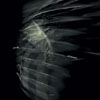 Had the promise of the first track on this record carried through, I'd be ranting and raving about an extraordinary work of sound manipulation and minimal composition right now. Unfortunately the first track does feel like a standout on this Shimmer and puts the remaining seven songs to shame. Jasch has a great ear that allows him to do more than just slap sounds together in a creative way; he gets into sounds and recognizes their beginning and end and chooses, from the perspective, how to organize a piece of music. The result is a broad spectrum of stuttering sounds, whining strings, deep bass growls, and static rushes that never quite leave the world of organization and dive into the realm of the subconscious world.
Had the promise of the first track on this record carried through, I'd be ranting and raving about an extraordinary work of sound manipulation and minimal composition right now. Unfortunately the first track does feel like a standout on this Shimmer and puts the remaining seven songs to shame. Jasch has a great ear that allows him to do more than just slap sounds together in a creative way; he gets into sounds and recognizes their beginning and end and chooses, from the perspective, how to organize a piece of music. The result is a broad spectrum of stuttering sounds, whining strings, deep bass growls, and static rushes that never quite leave the world of organization and dive into the realm of the subconscious world. When the message is primarily about breaking down social and political barriers, it's only natural that the musical ones should be overstepped as well. For their third full-length release, the first for Ropeadope, the Brooklyn soldiers of Afrobeat open with the loaded question of "Who is This America Dem Speak of Today?"
When the message is primarily about breaking down social and political barriers, it's only natural that the musical ones should be overstepped as well. For their third full-length release, the first for Ropeadope, the Brooklyn soldiers of Afrobeat open with the loaded question of "Who is This America Dem Speak of Today?"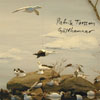 This 3" CD release is a nice idea that contains seven short and sweetsongs made for a summer in Sweden. The word "gästhamnar" translatesinto English as "guest harbours" and though I'm not quite sure what thedifference between a normal harbor and a guest harbor is, the image ofwater, boats, and people having fun certainly runs through every songon this disc. Each song uses a palette that is, in some ways, borrowedfrom each of the other songs. The synthesizers throughout these 18minutes of music always buzz in a very affecting way and the drums havethat lovely drum-stick-hitting-pillows sound that never allows thepercussion to become an intruder on the melody (no matter how drivingthe rhythms are). The songs always lilt along at a medium pace beforesurrendering to the next song and, with that surrendering, passing on anew variation that was inherent in the previous track. Patrik Torsson'scompositions remind me of childlike simplicity and, for the most part,they're never very busy. At the most there are three or fourinstruments at time, each interacting with the other to establish acurrent that swells and receeds naturally. With this in mind, I have tosay that I get bored very easily and that because much of this soundsfamiliar to me, I'm not over-impressed with Gästhamnar.The brevity of these recordings, however, kept boredom from becoming aproblem and I was able to appreciate these miniatures as being prettysongs meant for pretty days. A bit more variation would be key inmaking this more enjoyable. Eighteen minutes is plenty of time to addin extras here and there that would cure the redundancy blues.Torsson's music is innocent, sweet, and despite some monotonousqualities, enjoyable overall. I just wish he would've shaken things upa bit. Perhaps a good producer could improve the variety of soundwithout ruining Torsson's knack for decent songwriting.
This 3" CD release is a nice idea that contains seven short and sweetsongs made for a summer in Sweden. The word "gästhamnar" translatesinto English as "guest harbours" and though I'm not quite sure what thedifference between a normal harbor and a guest harbor is, the image ofwater, boats, and people having fun certainly runs through every songon this disc. Each song uses a palette that is, in some ways, borrowedfrom each of the other songs. The synthesizers throughout these 18minutes of music always buzz in a very affecting way and the drums havethat lovely drum-stick-hitting-pillows sound that never allows thepercussion to become an intruder on the melody (no matter how drivingthe rhythms are). The songs always lilt along at a medium pace beforesurrendering to the next song and, with that surrendering, passing on anew variation that was inherent in the previous track. Patrik Torsson'scompositions remind me of childlike simplicity and, for the most part,they're never very busy. At the most there are three or fourinstruments at time, each interacting with the other to establish acurrent that swells and receeds naturally. With this in mind, I have tosay that I get bored very easily and that because much of this soundsfamiliar to me, I'm not over-impressed with Gästhamnar.The brevity of these recordings, however, kept boredom from becoming aproblem and I was able to appreciate these miniatures as being prettysongs meant for pretty days. A bit more variation would be key inmaking this more enjoyable. Eighteen minutes is plenty of time to addin extras here and there that would cure the redundancy blues.Torsson's music is innocent, sweet, and despite some monotonousqualities, enjoyable overall. I just wish he would've shaken things upa bit. Perhaps a good producer could improve the variety of soundwithout ruining Torsson's knack for decent songwriting.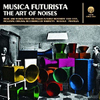 With the release of Musica Futuristica, LTM introduces their new sub-label Salon and presents a companion volume to Futurism & Dada Reviewed.This compilation includes all but one of the of Futurist tracks on theabove-mentioned CD and adds a variety of others from both major andminor players in the Futurist movement. As the result of a thoroughremastering of the archived originals, the quality of the recordings onMusica Futuristica is much better than on Futurism & Dada Reviewed.The disc opens with F.T. Marinetti reading the "Definition of Futurism"and calling for the use of sound and noise as weapons againsttraditionalism. For Marinetti and other Futurists, the roar of a carwas more beautiful than anything by Mozart or Beethoven. This desirefor noise can be found in "The Awakening of a City" by Luigi Russolo.In this composition, Russolo attempts to portray the dawning of a newcity, complete with its industrial sirens and abundant factorywhistles. Performance of the piece was initially banned in Italy forfear that it would "likely trigger a public disturbance." The droningnature of the work recalls the compositions of Pierre Henry and otherpractitioners of musique concrète, except for the fact that it predatesHenry by a few decades. The most interesting piece on the album isMarinetti's "Five Radio Sintesi," a series of five pieces thatincorporate found sound and make extensive use of silence. Dating from1933, the juxtaposition of disparate sound elements such as Americanfolk music, the sound of a stadium crowd, the hum of a car, and anoperatic vocal solo highlight the Futurists' desire to point out thebeauty to be find in the banal nature of quotidian existence. With theoutbreak of the Second World War, the Futurist movement faded as morepressing issues came to play in European society and the sonicexperiments of Marinetti, Russolo and others were not allowed to befurther explored. However, as Musica Futuristica demonstrates,the influence of these works can be seen across multiple genres, frommodern composition to avant-rock and electronica.
With the release of Musica Futuristica, LTM introduces their new sub-label Salon and presents a companion volume to Futurism & Dada Reviewed.This compilation includes all but one of the of Futurist tracks on theabove-mentioned CD and adds a variety of others from both major andminor players in the Futurist movement. As the result of a thoroughremastering of the archived originals, the quality of the recordings onMusica Futuristica is much better than on Futurism & Dada Reviewed.The disc opens with F.T. Marinetti reading the "Definition of Futurism"and calling for the use of sound and noise as weapons againsttraditionalism. For Marinetti and other Futurists, the roar of a carwas more beautiful than anything by Mozart or Beethoven. This desirefor noise can be found in "The Awakening of a City" by Luigi Russolo.In this composition, Russolo attempts to portray the dawning of a newcity, complete with its industrial sirens and abundant factorywhistles. Performance of the piece was initially banned in Italy forfear that it would "likely trigger a public disturbance." The droningnature of the work recalls the compositions of Pierre Henry and otherpractitioners of musique concrète, except for the fact that it predatesHenry by a few decades. The most interesting piece on the album isMarinetti's "Five Radio Sintesi," a series of five pieces thatincorporate found sound and make extensive use of silence. Dating from1933, the juxtaposition of disparate sound elements such as Americanfolk music, the sound of a stadium crowd, the hum of a car, and anoperatic vocal solo highlight the Futurists' desire to point out thebeauty to be find in the banal nature of quotidian existence. With theoutbreak of the Second World War, the Futurist movement faded as morepressing issues came to play in European society and the sonicexperiments of Marinetti, Russolo and others were not allowed to befurther explored. However, as Musica Futuristica demonstrates,the influence of these works can be seen across multiple genres, frommodern composition to avant-rock and electronica. 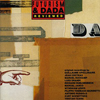 Released by LTM in 2000, Futurism & Dada Revieweddocuments the sonic experiments of these two respective art movements.While the Dadaists were primarily concerned with visual art and theFuturists with politics and literature, both groups were interested inthe burgeoning technology of audio reproduction and the possibilitiesit offered for revolutionary artistic creation. This compilation ofarchival recordings presents a wide variety of the Dada and Futristaudio projects, from sound poems and avant-garde compositions torecordings of interviews and manifestoes by major proponents of bothmovements. Unfortunately, due to the primitive recording technologyavailable during the first half of the 20th century, the poor qualityof these recordings is a constant reminder of the "avant-garde" natureof the work. As far as Futurist compositions on the compilation, all ofthe tracks on Futurism & Dada Reviewed can be found in remastered form on the recent Musica Futuristica,with the exception of Luigi Grandi's "Cavalli + Acciaio." On the Dadaside, the disc presents recordings of poems by Appolinaire, TristanTzara and Jean Cocteau, along with two compositions written by KurtSchwitters and Marcel Duchamp. Duchamp, known as one of the mostinfluential poets of the last century, was also an accomplishedcomposer and his composition "La Mariée mise a nu par ses Celibataires,même" shares its title with one of his most famous paintings. Themethod of composition employed by Duchamp foreshadows those to be usedlater by artists such as John Cage in their use of indeterminatecompositional techniques. Duchamp took numerous balls, assigning eachof them various notes, poured them into a funnel, and then allowed themto drop into the open trucks of a toy train in order to determine thetonal sequence of the composition. While the original version of thiscomposition was originally intended for piano, a new version isincluded on this compilation where the hammers of a piano are replacedwith a small rotary disc that vibrates the strings instead of strikingthem. Kurt Schwitter's composition "Die Sonata In Urlauten" employs thevoice in a variety in nonsensical utterances, song, and child-speak.Listening to Schwitters, it is easy to hear the influence of works likethis on Mike Patton and other contemporary vocal performers. While thequality of the recordings leaves a bit to offer, this compilation isstill of interest to anyone interested in art and music history andoffers a glimpse at groundbreaking compositions that opened up thepossibilities still being explored by contemporary composers andperformers.
Released by LTM in 2000, Futurism & Dada Revieweddocuments the sonic experiments of these two respective art movements.While the Dadaists were primarily concerned with visual art and theFuturists with politics and literature, both groups were interested inthe burgeoning technology of audio reproduction and the possibilitiesit offered for revolutionary artistic creation. This compilation ofarchival recordings presents a wide variety of the Dada and Futristaudio projects, from sound poems and avant-garde compositions torecordings of interviews and manifestoes by major proponents of bothmovements. Unfortunately, due to the primitive recording technologyavailable during the first half of the 20th century, the poor qualityof these recordings is a constant reminder of the "avant-garde" natureof the work. As far as Futurist compositions on the compilation, all ofthe tracks on Futurism & Dada Reviewed can be found in remastered form on the recent Musica Futuristica,with the exception of Luigi Grandi's "Cavalli + Acciaio." On the Dadaside, the disc presents recordings of poems by Appolinaire, TristanTzara and Jean Cocteau, along with two compositions written by KurtSchwitters and Marcel Duchamp. Duchamp, known as one of the mostinfluential poets of the last century, was also an accomplishedcomposer and his composition "La Mariée mise a nu par ses Celibataires,même" shares its title with one of his most famous paintings. Themethod of composition employed by Duchamp foreshadows those to be usedlater by artists such as John Cage in their use of indeterminatecompositional techniques. Duchamp took numerous balls, assigning eachof them various notes, poured them into a funnel, and then allowed themto drop into the open trucks of a toy train in order to determine thetonal sequence of the composition. While the original version of thiscomposition was originally intended for piano, a new version isincluded on this compilation where the hammers of a piano are replacedwith a small rotary disc that vibrates the strings instead of strikingthem. Kurt Schwitter's composition "Die Sonata In Urlauten" employs thevoice in a variety in nonsensical utterances, song, and child-speak.Listening to Schwitters, it is easy to hear the influence of works likethis on Mike Patton and other contemporary vocal performers. While thequality of the recordings leaves a bit to offer, this compilation isstill of interest to anyone interested in art and music history andoffers a glimpse at groundbreaking compositions that opened up thepossibilities still being explored by contemporary composers andperformers. Masters of the stomach-churning, intestine-voiding, subharmonicfrequencies, Steven O'Malley and Greg Anderson return for a sequel tolast year's impressive White 1, not surprisingly entitled White 2.Much has been made of Anderson and O'Malley's transmogrification andmutation of their Nordic black metal influences into the slow-motion,doom-laden minimalism of their recordings as Sunn O))). Never mind thatit isn't a very original idea, having previously been put forth bySeattle ambient sludge-core band Earth. Listen to the track "Ripped onFascist Ideas" from Earth's live album Sunn Amps and Smashed Guitarsfor the origin of Sunn O)))'s sonic palette. To their credit, however,Sunn O))) have relentlessly pursued this aesthetic, going several stepsfurther with their use of variable-speed tape mutations and othersynthetic technology to create the lowest low-end feasible, with thepossible exception of that lowrider that cruises through myneighborhood in the middle of the night blasting bone-rattling Miamibass. On White 2, they choose not to repeat the guest-vocalist tactics of the first Whitealbum, in favor of creating three lengthy, horror movie soundscapesthat willfully test the limits of the stereo playback system, even asthey revel in fascinatingly tangible textures. Although they approachtheir compositions from a completely different perspective, Sunn O)))arrive in the same general "dark ambient" territory as Lustmord orLull, spinning vaguely cinematic post-industrial abstractions in whichmood is the primary attraction. The fourteen doom-laden minutes of"Hell-O)))-Ween" are the most prototypical of the band: a series ofbrutally plodding riffs that are allowed to reverberate, slowlybuilding up compounding layers distortion and bass rumble like slowlycoagulating amber dripping down a prehistoric tree. It's crushing anddowtrodden, but it's nothing compared to the next two epic tracks ofdesolation and fear. "bassAliens" explores the lonely, claustrophobiccorners just out of sight on Ridley Scott's Nostromo, hauntedby the faint specter of menace, distorted subharmonic rumbles thatsputter and mutate, spewing foul plumes of hydrochloric acid. What'sremarkable about this track is the effective usage of higher-frequencytones and midrange atmospheric guitar plonks, which, juxtaposed withthe jarring bass rumbles, create a vivid sound environment unmatched onSunn O)))'s previous records. The album concludes with the 25-minuteepic "Decay 2 (Nihil's Maw)," where Anderson and O'Malley are joined bylegendary Mayhem vocalist Attila Csihar for a frightening peak into thevoid. Listening to this track on an expensive pair of headphones islike staring into the empty, yawning chasm of oblivion, a screaminghole that sucks up sound and life itself. Dislocated from anyrecognizable sound source other than Csihar's multi-layered growls,shrieks and Odinic chants, a listener has no choice but to floattowards the soul-shredding epicenter of the black hole, where ancientdemonic forces gather and align to prepare for the final descent tozero.
Masters of the stomach-churning, intestine-voiding, subharmonicfrequencies, Steven O'Malley and Greg Anderson return for a sequel tolast year's impressive White 1, not surprisingly entitled White 2.Much has been made of Anderson and O'Malley's transmogrification andmutation of their Nordic black metal influences into the slow-motion,doom-laden minimalism of their recordings as Sunn O))). Never mind thatit isn't a very original idea, having previously been put forth bySeattle ambient sludge-core band Earth. Listen to the track "Ripped onFascist Ideas" from Earth's live album Sunn Amps and Smashed Guitarsfor the origin of Sunn O)))'s sonic palette. To their credit, however,Sunn O))) have relentlessly pursued this aesthetic, going several stepsfurther with their use of variable-speed tape mutations and othersynthetic technology to create the lowest low-end feasible, with thepossible exception of that lowrider that cruises through myneighborhood in the middle of the night blasting bone-rattling Miamibass. On White 2, they choose not to repeat the guest-vocalist tactics of the first Whitealbum, in favor of creating three lengthy, horror movie soundscapesthat willfully test the limits of the stereo playback system, even asthey revel in fascinatingly tangible textures. Although they approachtheir compositions from a completely different perspective, Sunn O)))arrive in the same general "dark ambient" territory as Lustmord orLull, spinning vaguely cinematic post-industrial abstractions in whichmood is the primary attraction. The fourteen doom-laden minutes of"Hell-O)))-Ween" are the most prototypical of the band: a series ofbrutally plodding riffs that are allowed to reverberate, slowlybuilding up compounding layers distortion and bass rumble like slowlycoagulating amber dripping down a prehistoric tree. It's crushing anddowtrodden, but it's nothing compared to the next two epic tracks ofdesolation and fear. "bassAliens" explores the lonely, claustrophobiccorners just out of sight on Ridley Scott's Nostromo, hauntedby the faint specter of menace, distorted subharmonic rumbles thatsputter and mutate, spewing foul plumes of hydrochloric acid. What'sremarkable about this track is the effective usage of higher-frequencytones and midrange atmospheric guitar plonks, which, juxtaposed withthe jarring bass rumbles, create a vivid sound environment unmatched onSunn O)))'s previous records. The album concludes with the 25-minuteepic "Decay 2 (Nihil's Maw)," where Anderson and O'Malley are joined bylegendary Mayhem vocalist Attila Csihar for a frightening peak into thevoid. Listening to this track on an expensive pair of headphones islike staring into the empty, yawning chasm of oblivion, a screaminghole that sucks up sound and life itself. Dislocated from anyrecognizable sound source other than Csihar's multi-layered growls,shrieks and Odinic chants, a listener has no choice but to floattowards the soul-shredding epicenter of the black hole, where ancientdemonic forces gather and align to prepare for the final descent tozero.  As somewhat of an unofficial tenth anniversary celebration of thegroup, Jaga Jazzist have decided to reissued their pre-Ninja Tune 1998mini-LP, which has quickened my completist heart. Previously availableonly within their native Norway, or as a hefty-priced import (if youcould find it), the re-release of Magazinenow has wider distribution thanks in part to the success of the group'sNorth American releases and subsequent tour. The complexity of thecompositions and musicianship on this disc blows my mind, knowing thatthe majority of the group were still in their late teens when it wasrecorded. Such compositions and performances sound like that ofseasoned players at least a generation or two ahead. The crisp, liveelectro-styled dance bass and drums of "Jaga Ist Zu Hause" pulse alongfor soaring melodies handled by unison xylophone and soprano sax.Normally, I have an aversion to modern day soprano sax performances,but I'm willing to overlook and even embrace it in this context. Thebroken-up swing and shimmering Fender Rhodes on "Swedish Take Away(Live)" recalls the popular, yet subtle 70s action flick soundtrackstyle, with a brief and tasteful drum solo. The cheerful "Seems To Me"is the first track I've heard of any of Jaga Jazzist's stuff featuringvocals, which are accompanied by acoustic guitar and tastefullypeppered with glockenspiel and smooth horns. For the bonus tracks,"Serafin I Jungelen" re-mixes source material from an even earlierrelease to an electronic dance pulse, while "Magazine Part I & II"messes with the said releases tracks in a very open format. Havinggarnered a fair amount of acclaim outside of their homeland, I'mlooking forward to additional re-releases of earlier material, whichwill continue to have me thinking that I'm an old fart based on themusical chops that I've got.
As somewhat of an unofficial tenth anniversary celebration of thegroup, Jaga Jazzist have decided to reissued their pre-Ninja Tune 1998mini-LP, which has quickened my completist heart. Previously availableonly within their native Norway, or as a hefty-priced import (if youcould find it), the re-release of Magazinenow has wider distribution thanks in part to the success of the group'sNorth American releases and subsequent tour. The complexity of thecompositions and musicianship on this disc blows my mind, knowing thatthe majority of the group were still in their late teens when it wasrecorded. Such compositions and performances sound like that ofseasoned players at least a generation or two ahead. The crisp, liveelectro-styled dance bass and drums of "Jaga Ist Zu Hause" pulse alongfor soaring melodies handled by unison xylophone and soprano sax.Normally, I have an aversion to modern day soprano sax performances,but I'm willing to overlook and even embrace it in this context. Thebroken-up swing and shimmering Fender Rhodes on "Swedish Take Away(Live)" recalls the popular, yet subtle 70s action flick soundtrackstyle, with a brief and tasteful drum solo. The cheerful "Seems To Me"is the first track I've heard of any of Jaga Jazzist's stuff featuringvocals, which are accompanied by acoustic guitar and tastefullypeppered with glockenspiel and smooth horns. For the bonus tracks,"Serafin I Jungelen" re-mixes source material from an even earlierrelease to an electronic dance pulse, while "Magazine Part I & II"messes with the said releases tracks in a very open format. Havinggarnered a fair amount of acclaim outside of their homeland, I'mlooking forward to additional re-releases of earlier material, whichwill continue to have me thinking that I'm an old fart based on themusical chops that I've got.
